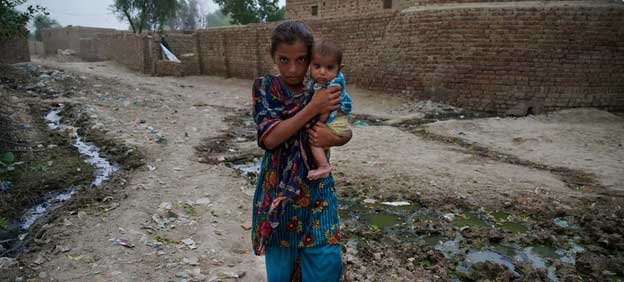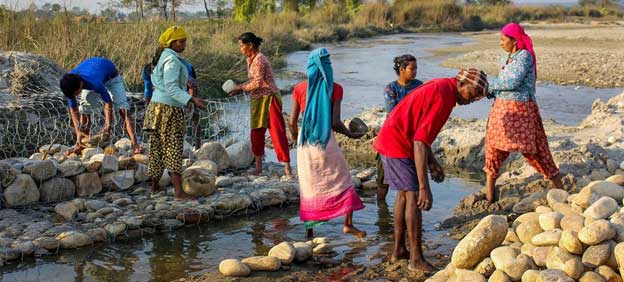Russia is a child-killer. But what about Israel, Mr Guterres?
The UN chief’s refusal to add Israel to its child-murderer list shows that to it, Palestinian kids matter less than others.
- Al Jazeera columnist
Little Mohammad al-Tamimi must have been excited.
Twilight on June 2 was slowly slipping into night when the two-and-a-half-year-old toddler, with a shock of light brown hair, got into his father’s car parked outside their home in Nabi Saleh, a village northwest of Ramallah in the occupied West Bank.
KEEP READING
list of 4 itemsSaudi Arabia-Israel normalisation difficult but possible: Blinken
Palestinians wounded in Jenin raid face long road to recovery
Israeli, Palestinian officials discuss violence in West Bank
‘Arm us or protect us’: PA’s role questioned amid settler attacks
Haitham al-Tamimi and his son were headed to a niece’s birthday party. Sweet treats, family and fun were on the menu. Moments later, the car was engulfed by bullets fired by Israeli soldiers stationed at a nearby checkpoint.
Mohammad’s mother, Marwa, rushed out of the house. “My husband was trying to drive the car to move it away from the direction of the shooting,” she said. All the frantic while, a wounded Haitham cried out for his badly injured son: “Hamoudi, Hamoudi.”
Mohammad had been shot in the head. “I was sure he was killed. It was clear because I saw his head was bleeding,” Marwa remembered.
Mohammad was airlifted to a Tel Aviv hospital. Four days later – strapped to a tangle of tubes and monitors – he was dead. His father survived.
At first, predictably, Israeli officials blamed “Palestinian crossfire” for the shooting of two innocents. Then, again predictably, their story shifted. Now, it was “unclear” who was responsible. An “investigation” was opened. Finally, another predictable admission: an Israeli soldier had shot the pair.
Mohammad al-Tamimi’s killing was a “mistake”, an Israeli official said. Another lethal “mistake” in a catalogue of lethal “mistakes” Israeli soldiers have made again and again that have claimed the lives of Palestinian after Palestinian – young and old.
And like the litany of “mistake”-prone Israeli soldiers, the gunman who blasted a bullet into Mohammad al-Tamimi’s skull will not be punished for killing a child.
Twenty-seven Palestinian children in Gaza and the West Bank have already been killed by Israeli forces this year. Mohammad al-Tamimi was the youngest. In 2022, 42 Palestinian children were killed and 933 injured by the Israeli military. In 2021, Israeli forces killed 78 Palestinian children and injured another 982.
Among the living, four out of five Palestinian children in the Gaza Strip suffer from chronic depression, sadness and fear caused by the 16-year Israeli blockade of the besieged territory.
By any humane measure, those figures are a breathtaking reflection of Israel’s long, shameful record of killing and maiming Palestinian children in body, mind and spirit.
Although accurate, “shameful” is not the word United Nations Secretary-General Antonio Guterres is eager to use to describe the horror of what happened to Mohammad al-Tamini and other Palestinian kids Israeli soldiers have disfigured and killed year after year.
That hypocrisy was made plain last week when, despite the entreaties of a slew of human rights organisations, Guterres chose, once more, not to include Israel in its “list of shame” – a blacklist of “parties to armed conflict who commit grave violations against children”.
Russia made it onto this year’s ledger. Guterres was moved to add Russia’s regular forces and mercenaries after he was “shocked” and “appalled by the high number of grave violations against children in Ukraine” in 2022. It marked the first time one of the five permanent members of the UN Security Council joined the blacklist.
Vladimir Putin’s Russia deserves it. Three teenagers were among at least 11 people killed by a Russian missile strike on a popular pizzeria in eastern Ukraine on Tuesday evening. That outrage, alone, confirmed Russia’s place on the UN’s roster of shame.
Yet, apparently, Guterres was not “shocked” or “appalled” enough to break with precedent further and finally acknowledge that Israel’s soldiers are as guilty as Russia’s soldiers in “committing grave violations against children”.
Rather than admit the truth, the UN chief preferred instead to reach for the diplomatic corps’s reliable handbook of stock, limp bromides.
“I remain deeply concerned by the number of children killed and maimed by Israeli forces during hostilities and through the use of live ammunition,” Guterres wrote on June 5.
The secretary general repeated that he was “deeply concerned” by Israel’s “excessive use of force against children” three times over two meandering, euphemism-filled paragraphs.
Guterres compounded his blatant double-standard by suggesting, obscenely, that Israel had earned some consideration for having killed and maimed fewer Palestinian children in 2022 than it did the year before.
I can imagine the scene as Guterres huddled with his advisers to help prepare his latest report, carefully calibrated not to offend Israel.
Guterres: What the terrible Russians and their proxies are doing to Ukrainian children is shameful and appalling. Agreed?
Adviser 1: Agreed.
Adviser 2: Mr secretary general, just playing devil’s advocate here. But what about the deep and lasting damage the terrible Israelis and their proxies have done and continue to do to so many Palestinian children?
Guterres: Yes that’s terrible but it’s also a tricky one, isn’t it?
Advisers 1 and 2: Yes, it’s tricky all right.
Guterres: Well, “appalled” and “shameful” are definitely out. Otherwise, the White House or worse, European Commission President Ursula von der Leyen will make my life miserable.
Advisers 1 and 2: Good point.
Guterres: So, “deeply concerned” it is. It’s meaningless but it’s the best we can do. Anyway, it’s not the first meaningless thing I’ve had to say, right?
Advisers 1 and 2: Noted. Russia – bad, very bad. Israel – “deeply concerned.” Sounds about right.
Still, I wonder, in the UN’s calculus, when does the killing and maiming of children by soldiers tip from “deeply concerning” into “appalling” and “shameful”?
What is the mysterious threshold?
Is it a round number? Is it a question of intent? What is the precise nature and scope of the killing and maiming of Palestinian children that must occur before the UN secretary general determines that Israel’s fatal actions warrant being denounced as “appalling” and “shameful”?
Or could it be that the nationality of the soldiers doing the maiming and killing is the deciding factor?
Whatever the litmus test, even Human Rights Watch (HRW) – the darling of most Western news organisations and capitals – has concluded that Guterres should have put Israel on the “list of shame” years ago.
Israel “belongs on the list”, HRW wrote. Its “omission” not only “sends a mixed message about the UN’s willingness to hold powerful governments accountable” but “does a grave disservice to Palestinian children”.
Palestine’s ambassador to the UN, Riyad Mansour, called Guterres’s decision to leave Israel off the shame list a “big mistake”.
Beyond being a “big mistake” and a “grave disservice to Palestinian children”, this cowardice may be the sad, inevitable price the UN’s top diplomats are willing to pay to keep their important jobs, and the perks and privileges that go with them.
After all, diplomats, like the rest of us, have to pick their battles.
Does anyone believe that Guterres, or any UN secretary general for that matter, would volunteer to fall on their cushy petard in defence of the fast-fading memory of Mohammad al-Tamimi or the many other Palestinian children killed – by “mistake,” of course – by Israel?
No, I didn’t think so.
The views expressed in this article are the author’s own and do not necessarily reflect Al Jazeera’s editorial stance.









 Source: Consultative Group to Assist the Poor (CGAP) is a global partnership of more than 30 leading development organizations that works to advance the lives of poor people, especially women, through financial inclusion.
Source: Consultative Group to Assist the Poor (CGAP) is a global partnership of more than 30 leading development organizations that works to advance the lives of poor people, especially women, through financial inclusion.